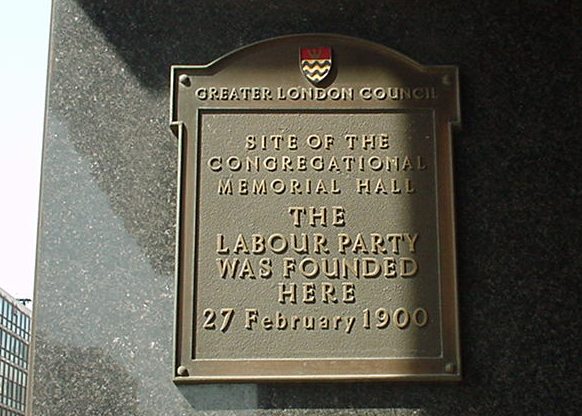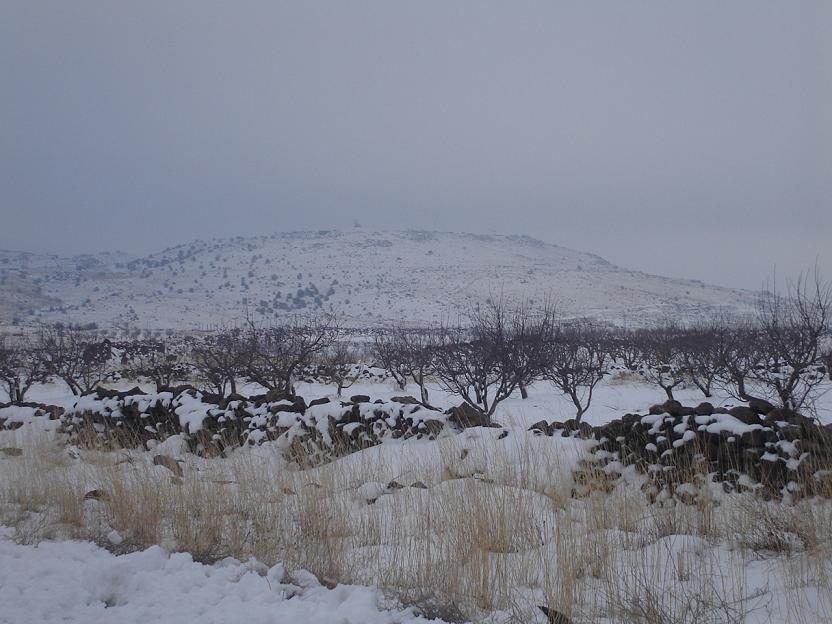|
Muhammad Sa'id Pasha Shamdin
Muhammad Sa'id Pasha Shamdin (died 1900), also known as Muhammad Sa'id Agha Shamdin, was an Ottoman military official of the Syria Vilayet, best known for being the amir al-hajj (commander of the Hajj pilgrim caravan to Mecca) for 20 years. Military career Muhammad Sa'id was a son of Shamdin Agha (d. 1860), a Kurdish irregular cavalry commander in Damascus under the provincial government. They belonged to the Shamdin-Yusuf, the strongest Kurdish clan of 19th-century Damascus. In March 1844, the Damascus Provincial Council appointed Muhammad Sa'id to command an expedition to Jabal Ajlun, a mountainous region in the province's hinterland where government authority was weak. The purpose of the expedition was to assert government rule and secure the administrative center of Irbid against the Bedouin tribes, which wielded more influence in the district and historically imposed their own taxes on the inhabitants. The mission evidently failed. In 1859, after the irregular garrisons of ... [...More Info...] [...Related Items...] OR: [Wikipedia] [Google] [Baidu] |
Ottoman Empire
The Ottoman Empire (), also called the Turkish Empire, was an empire, imperial realm that controlled much of Southeast Europe, West Asia, and North Africa from the 14th to early 20th centuries; it also controlled parts of southeastern Central Europe, between the early 16th and early 18th centuries. The empire emerged from a Anatolian beyliks, ''beylik'', or principality, founded in northwestern Anatolia in by the Turkoman (ethnonym), Turkoman tribal leader Osman I. His successors Ottoman wars in Europe, conquered much of Anatolia and expanded into the Balkans by the mid-14th century, transforming their petty kingdom into a transcontinental empire. The Ottomans ended the Byzantine Empire with the Fall of Constantinople, conquest of Constantinople in 1453 by Mehmed II. With its capital at History of Istanbul#Ottoman Empire, Constantinople (modern-day Istanbul) and control over a significant portion of the Mediterranean Basin, the Ottoman Empire was at the centre of interacti ... [...More Info...] [...Related Items...] OR: [Wikipedia] [Google] [Baidu] |
Mosul
Mosul ( ; , , ; ; ; ) is a major city in northern Iraq, serving as the capital of Nineveh Governorate. It is the second largest city in Iraq overall after the capital Baghdad. Situated on the banks of Tigris, the city encloses the ruins of the ancient Old Assyrian Empire, Assyrian city of Nineveh—once the List of largest cities throughout history, largest city in the world—on its east side. Due to its strategic and central location, the city has traditionally served as one of the hubs of international commerce and travel in the region. It is considered as one of the historically and culturally significant cities of the Arab world. The North Mesopotamian dialect of Arabic commonly known as North Mesopotamian Arabic, ''Moslawi'' is named after Mosul, and is widely spoken in the region. Together, with the Nineveh Plains, Mosul is a historical center of the Assyrian people, Assyrians. The surrounding region is ethnically and religiously diverse; a large majority of the city is A ... [...More Info...] [...Related Items...] OR: [Wikipedia] [Google] [Baidu] |
Kurdish People From The Ottoman Empire
Kurdish may refer to: *Kurds or Kurdish people *Kurdish language **Northern Kurdish (Kurmanji) **Central Kurdish (Sorani) **Southern Kurdish ** Laki Kurdish *Kurdish alphabets *Kurdistan, the land of the Kurdish people which includes: **Southern Kurdistan **Eastern Kurdistan **Northern Kurdistan **Western Kurdistan See also * Kurd (other) *Kurdish literature *Kurdish music *Kurdish rugs *Kurdish cuisine *Kurdish culture *Kurdish nationalism Kurdish nationalism () is a nationalist political movement which asserts that Kurds are a nation and espouses the creation of an independent Kurdistan from Iran, Iraq, Syria, and Turkey. Early Kurdish nationalism had its roots in the Ottoman ... {{disambiguation Language and nationality disambiguation pages ... [...More Info...] [...Related Items...] OR: [Wikipedia] [Google] [Baidu] |
19th-century People From The Ottoman Empire
The 19th century began on 1 January 1801 (represented by the Roman numerals MDCCCI), and ended on 31 December 1900 (MCM). It was the 9th century of the 2nd millennium. It was characterized by vast social upheaval. Slavery was Abolitionism, abolished in much of Europe and the Americas. The First Industrial Revolution, though it began in the late 18th century, expanded beyond its British homeland for the first time during the 19th century, particularly remaking the economies and societies of the Low Countries, France, the Rhineland, Northern Italy, and the Northeastern United States. A few decades later, the Second Industrial Revolution led to ever more massive urbanization and much higher levels of productivity, profit, and prosperity, a pattern that continued into the 20th century. The Catholic Church, in response to the growing influence and power of modernism, secularism and materialism, formed the First Vatican Council in the late 19th century to deal with such problems an ... [...More Info...] [...Related Items...] OR: [Wikipedia] [Google] [Baidu] |
1900 Deaths
As of March 1 (Old Style, O.S. February 17), when the Julian calendar acknowledged a leap day and the Gregorian calendar did not, the Julian calendar fell one day further behind, bringing the difference to 13 days until February 28 (Old Style, O.S. February 15), 2100. Summary Political and military The year 1900 was the end of the 19th century and the beginning of the 20th century. Two days into the new year, the United States Secretary of State, U.S. Secretary of State John Hay announced the Open Door Policy regarding Qing dynasty, China, advocating for equal access for all nations to the Chinese market. The 1900 Galveston hurricane, Galveston hurricane would become the List of disasters in the United States by death toll, deadliest natural disaster in United States history, killing between 6,000 and 12,000 people, mostly in and near Galveston, Texas, as well as leaving 10,000 people homeless, destroying 7,000 buildings of all kinds in Galveston. As of 2025, it remains ... [...More Info...] [...Related Items...] OR: [Wikipedia] [Google] [Baidu] |
Saham Al-Jawlan
Saham al-Jawlan or Saham el-Golan () is a Syrian village in the Daraa Governorate, in the Hauran region. It had a population of 6,572 in 2004.General Census of Population and Housing 2004 Syria Central Bureau of Statistics (CBS). Daraa Governorate. Most residents work in the cultivation of cereals, olives and vegetables. History Antiquity The village has remains dating back to the 4th century. It is also believed to be the biblical city of |
Tell Al-Jukhadar
Tell may refer to: *Tell (archaeology), a type of archaeological site *Tell (name), a name used as a given name and a surname *Tell (poker), a subconscious behavior that can betray information to an observant opponent Arts, entertainment, and media * ''Tell'' (2012 film), a short psychological horror film by Ryan Connolly * ''Tell'' (2014 film), a crime thriller starring Katee Sackhoff, Jason Lee and Milo Ventimiglia * '' Tell Magazine'', a Nigerian newsweekly * "The Tell", an episode of ''NCIS'' * "The Tell" (''Teen Wolf''), a television episode * ''The Tell'', a photomural, part of the Laguna Canyon Project Places Middle East *Tel Aviv, Israel *Et-Tell, an archaeological site identified with Bethsaida *Tell, West Bank, a Palestinian village near Nablus *Ancient Tell, Beirut, Lebanon; the Canaanite pre-Phoenician era of Beirut and archaeological site United States *Tell, Texas, unincorporated community in the United States *Tell, Wisconsin, town in the United States *Tell ... [...More Info...] [...Related Items...] OR: [Wikipedia] [Google] [Baidu] |
Golan Heights
The Golan Heights, or simply the Golan, is a basaltic plateau at the southwest corner of Syria. It is bordered by the Yarmouk River in the south, the Sea of Galilee and Hula Valley in the west, the Anti-Lebanon mountains with Mount Hermon in the north and Ruqqad, Wadi Raqqad in the east. It hosts vital water sources that feed the Hasbani River and the Jordan River. Two thirds of the area was Israeli occupation of the Golan Heights, occupied by Israel following the 1967 Six-Day War and then Golan Heights Law, effectively annexed in 1981 – an action unrecognized by the international community, which continues to consider it Israeli occupation, Israeli-occupied Syrian territory. In 2024 Israeli invasion of Syria, 2024, Israel occupied the remaining one third of the area. The earliest evidence of human habitation on the Golan dates to the Upper Paleolithic period. It was home to the biblical Geshur, and was later incorporated into Aram-Damascus,Michael Avi-Yonah (1979). ''The Hol ... [...More Info...] [...Related Items...] OR: [Wikipedia] [Google] [Baidu] |
Hauran
The Hauran (; also spelled ''Hawran'' or ''Houran'') is a region that spans parts of southern Syria and northern Jordan. It is bound in the north by the Ghouta oasis, to the northeast by the al-Safa field, to the east and south by the Harrat al-Sham and to the west by the Golan Heights. Traditionally, the Hauran consists of three subregions: the Nuqrah and Jaydur plains, the Jabal al-Druze massif, and the Lajat volcanic field. The population of the Hauran is largely Arab, but religiously heterogeneous; most inhabitants of the plains are Sunni Muslims belonging to large agrarian clans, while Druze form the majority in the eponymous Jabal al-Druze and a significant Greek Orthodox and Greek Catholic minority inhabit the western foothills of Jabal al-Druze. The region's largest towns are Daraa, al-Ramtha, and al-Suwayda. From the mid-1st century BC, the region was governed by the Roman Empire's Herodian and Nabatean client kings until it was formally annexed by the empire in ... [...More Info...] [...Related Items...] OR: [Wikipedia] [Google] [Baidu] |
Ghouta
Ghouta ( / ALA-LC: ''Ḡūṭat Dimašq'') is a countryside area in southwestern Syria that surrounds the city of Damascus along its eastern and southern rim. Name Ghouta is an Arabic term (''ghuta'') for 'garden'. Geography The Ghouta is an oasis formed by the Barada River, as its waters flow east of Mount Qasioun, and its seven tributaries. It surrounds the city of Damascus. To the east and south of the Ghouta lies the Marj plain, which forms a narrow belt of fields, and south of that lies the Hauran plain. The Barada River Valley borders the Ghouta to the northeast. The area north of the Ghouta is less fertile and eventually desolate hill country. To the west of the region is the Anti-Lebanon Mountains. The Ghouta is historically the most celebrated 'green zone' (a verdant, fertile area around an urban center) in the Levant, according to the historian Beshara Doumani. He also notes that its fame in this regard persists, despite the significant loss of its planted areas ... [...More Info...] [...Related Items...] OR: [Wikipedia] [Google] [Baidu] |
Hauran Sanjak
The Hauran Sanjak (, ) was a sanjak of the Ottoman Empire, spanning the southern areas of Ottoman Syria, located in modern-day Syria and Jordan. The city of Daraa was the sanjak's capital. The sanjak had a population of 182,805 in 1914. Subdistricts 16th century As a sanjak of Damascus Eyalet in the 16th century, the Qada (Kaza) of Hauran consisted of the following 14 nahiyes: *Jaydur, centered at Nawa *Banu Kilab *Banu Muqlid *Banu Malik al-Ashraf, centered at Namir *Banu Nashba *Banu Hilal *Jawlan al-Gharbi *Banu Abdullah *Banu Malik al-Sadir *Banu Atika *Banu Kinana *Banu Jahma *Banu al-A'sar *Banu Uqba Post-1865 As a sanjak of the Syria Vilayet, the sanjak was made up of eight kazas (first-level districts), some of which were further subdivided into nahiyes (second-level districts): * Shaykh Maskin (Şeyh Miskin) ** Ghabaghib (Gabağab) ** Jasim (Casim) * Daraa (Der'a) **Bosra (Eski Şam) *Ajlun (Aclun) ** Kufranjah (Küfrence) ** Kura (Küre) *Jabal al-Druze, Markaz Su ... [...More Info...] [...Related Items...] OR: [Wikipedia] [Google] [Baidu] |





